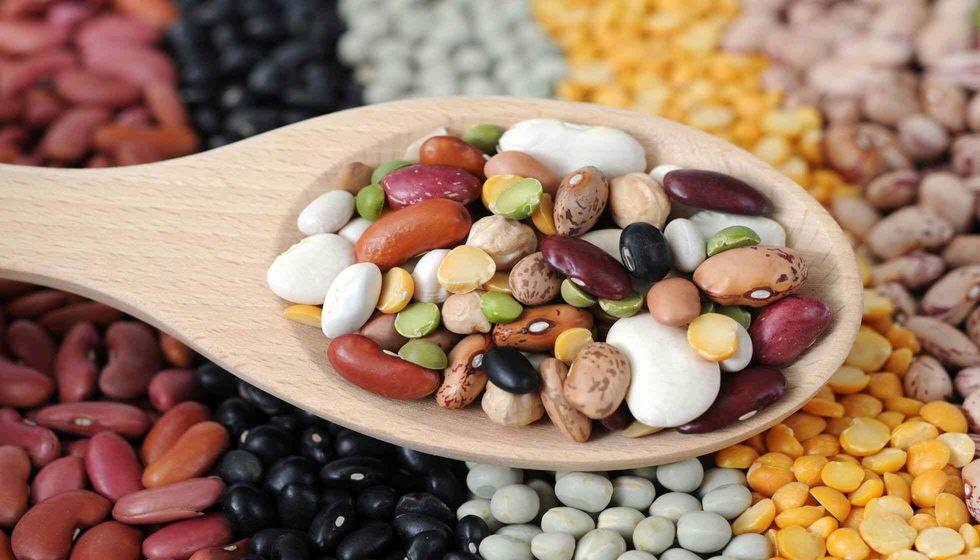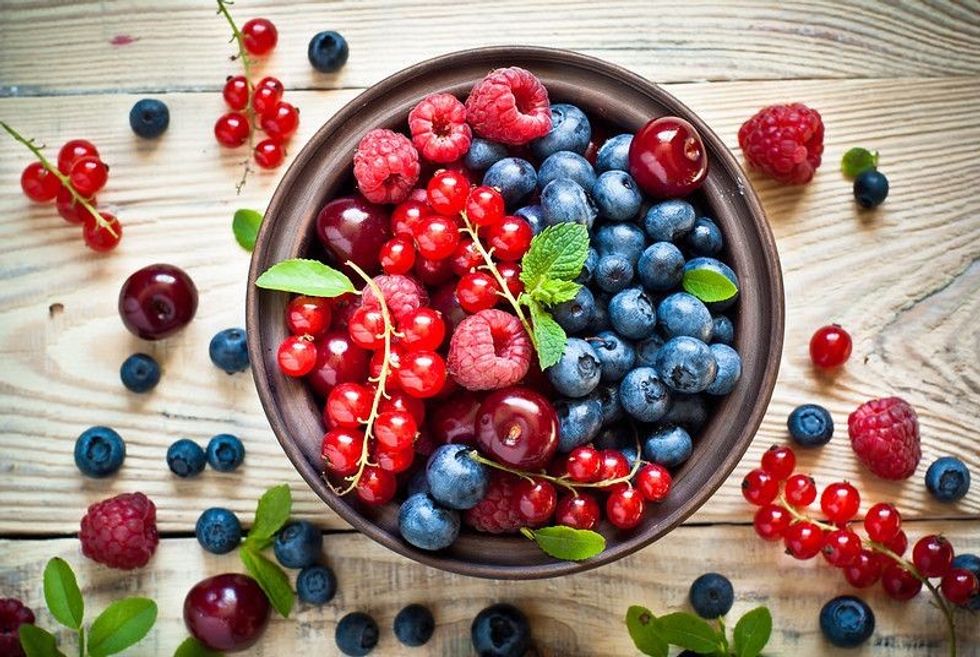Beans can be boiled, fried, or baked, eaten with lamb, chicken, or vegetables, and can even be mashed up or consumed whole after cooking, but where do they come from?
Beans can be of many shapes, colors, and sizes, and are extremely good for our health as they have a high amount of protein in them. They also have a rich and interesting history behind their cultivation!
Beans have been cultivated by human beings all over the world for centuries. The first traces of people planting beans have been found in South America almost 8,000 years ago in Peru.
This was the common bean (Phaseolus vulgaris). Evidence of the domestication and planting of other types of beans from the same genus were also found several thousand years later, such as the tepary bean, runner bean, and lima bean.
Native Americans used to grow beans alongside corn and squash, as they realized that corn stalks provided great support to the vine-like growth of pole bean plants. This technique was brought back to Europe after Christopher Columbus' expeditions to the Bahamas.
Previously, only the fava bean or broad bean were referred to as 'beans' but now all seeds of many plant families are called beans! Some surprising beans are peas, chickpeas, lupins, vanilla beans, coffee beans, and even cocoa beans.
Though these are not similar to the older common beans or fava beans, they have come to be categorized with other beans too. This might be because of how they are produced and grown.
Beans grow on a bean plant, which can be of two types, pole beans or bush beans. The former type of bean plants grow like vines and need additional support, while the latter, as the name suggests, grow in the form of bushes.
Bush beans have only recently grown popular as it had become difficult for commercial farmers to harvest beans from pole beans as their seeds developed slowly and they also grew taller than was convenient.
Thus, bush beans were specially bred so that they would remain near the ground and not need any support to grow. Beans grow in both these types of bean plants inside bean pods.
In both types of bean plants, the actual beans grow as seeds inside bean pods. What we know as green beans or snap beans are the bean pods inside which the seeds or beans are growing.
These include fava beans, scarlet runner beans, lima beans, soybeans, etc. In some varieties and species, when these pods are allowed to mature and dry, they develop into hard beans.
After taking them out or shelling them from their hardened pods, they can be consumed as fresh or dried further to become dried beans and stored for later consumption. Some dry bean varieties, also called soup beans, include navy beans, kidney beans, pinto beans, and many more.
If you want to read about other amazing food items, you can check out our articles on where do bay leaves come from? And where do nuts come from?
Where do coffee beans come from?
Although coffee beans are not similar to the beans we know and eat, they are still referred to as beans because these beans are extracted in a similar way, that is, from inside a pod!
Unlike the edible beans we use in our recipes, coffee seeds are not contained inside pods that are around 3-8 in (7-20 cm) long, but they are inside very small berries or cherries that grow on a coffee plant.
These plants can grow very tall and are often pruned by farmers to keep them at a smaller, desired height.
However, it takes 4-10 years for coffee plants to bear fruit from which coffee beans can be extracted. These plants need the perfect weather, temperature, and altitude to grow.
Coffee bean plants are only grown in certain countries of the world such as Brazil, Vietnam, Colombia, Ethiopia, and Indonesia, which fall in the area between the tropics of Capricorn and Cancer.
Where do vanilla beans come from?
Vanilla beans come from the vanilla orchid (Vanilla planifolia), which is a plant that grows in a vine similar to pole beans, and can grow up to 3o ft (9 m)! Unlike other bean pods and beans, the pod that grows after the pollinating process is referred to as the bean itself.
Vanilla is often the most important ingredient in any dessert recipe, but making the vanilla extract that we use in our everyday life is an extremely labor-inducing and time-consuming process.
Harvesting beans from this plant can be done only after growing it for around three years, and when it forms a beautiful orchid flower, it only lasts for a single day and has to be pollinated within that time period.
Moreover, this type of plant is pollinated only by a few species of bees and thus, the flowers have to be pollinated by hand.
When a vanilla pod or bean grows, it is picked by farmers before it is ripe.
The picked pods then go through many processes to dry and sweat them to develop their odor and flavor. Vanilla extract is then made by softening the beans and mixing them with water and alcohol.
However, since the process of harvesting and making a vanilla extract from beans is so lengthy and costly, scientists now make it from other artificial methods, which are then sold in supermarkets.
Where do black beans come from?
The black bean is one of the varieties of the common bean (Phaseolus vulgaris) that is native to North and South America and is also called the black turtle bean as it has a hard, shiny shell. This bean is grown and harvested similarly, as other beans with minor differences.
The black bean is a type of dry bean. Thus, the bean pods of the black bean plant are not picked and eaten as fresh or green beans but allowed to mature longer so they can harden and dry up.
This plant is usually planted in late spring after the last frost has passed as it will need warm weather to produce and form good-quality beans and bean pods.
They can be planted as bushes or poles, depending on your preference, and are ready to be harvested about 90-140 days from planting when the pods will be yellow and dry.
This can be checked by shaking the pod before cutting. If the seeds inside the pod rattle, the crop is ready to be harvested!
Where do lima beans come from?

Lima beans have a lot of different names and varieties. There are large-seeded and small-seeded varieties within this group of beans. Almost all of them were first found in Peru, like many other types of beans, and are now grown in many countries in North and South America.
Lima beans are consumed as fresh beans as well as dry beans. When the pods of lima bean plants are picked early, they give small, green, and somewhat fresh beans.
These tiny green beans are sometimes referred to as 'baby lima beans' or 'baby limas.’ When the pods are allowed to mature and harden a bit more, they lead to dry beans that are large and yellow. Other names for lima beans, whether fresh or dry, are butter beans and sieva beans.
Where do pinto beans come from?
Pinto beans are another variety of common beans. Like other similar bean types, they are native to the Americas and were introduced to Europe, but are now commonly grown and cooked all over the world.
They can have a determinate growth, that is, in the form of bush beans, or they can have an indeterminate growth in the form of pole bean vines.
Pinto beans can be consumed as snap beans or dried beans, depending on how and when farmers harvest them. If the bean pods are immature at the time of harvest, they can be cooked and consumed as snap beans.
If the bean pods are left to mature and dry before they are harvested, the pods will produce dried beans or seeds.
These are also popular all over the world, especially in Brazil, where they are considered to be a staple food. However, most dry beans have to be boiled or soaked in water before you can eat them.
Here at Kidadl, we have carefully created lots of interesting family-friendly facts for everyone to enjoy! If you liked our suggestions forwhere do beans come from? Amazing grainy facts for kids, then why not take a look at why do cats puke? Or when do tulips bloom? Beau









